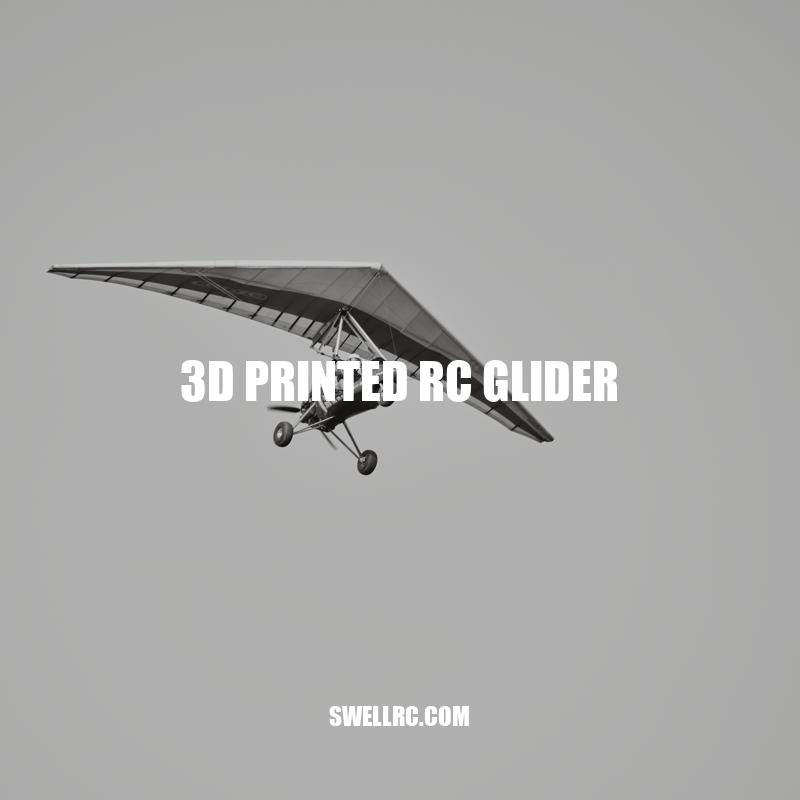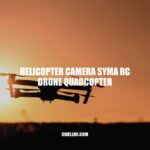Revolutionizing RC Gliders with 3D Printing
RC gliders, or remote-controlled gliders, are a fun and challenging hobby for enthusiasts to pursue. With the advent of 3D printing technology, the possibilities for customization and innovation in the RC glider world have expanded dramatically. By utilizing Computer-Aided Design (CAD) software to create designs and printing them with materials such as PLA or ABS, hobbyists can create unique and detailed gliders faster and more affordably than ever before. This article will discuss the design and 3D printing process for a 3D printed RC glider, as well as the benefits and potential challenges associated with this new technology.
Design and 3D Printing Process
- Creation of the design using CAD software
- Selection of the appropriate materials for 3D printing
- Slicing the design into layers and preparing it for printing
- Use of Fused Deposition Modeling (FDM) 3D printers to print the glider using PLA or ABS materials
- Creation of infill for the strength of the glider’s structure
- Careful removal of the support structures after printing
- Final tweaking of the printed parts on the CAD software to refine the glider’s specifications and optimize its flight performance
The process of designing and printing a 3D printed RC glider involves the use of specialized software and equipment. The first step is to create a digital design or model of the glider using CAD software. After designing, the appropriate materials for 3D printing such as PLA or ABS are selected.
Then, the design is sliced into layers and prepared for printing. The use of FDM 3D printers is common for printing gliders. FDM printers can print objects made of various materials including plastics and metals. Printing the glider’s structure involves the creation of a strong internal structure known as infill.
After printing, the support structures are carefully removed. Final adjustments of the printed parts are made on the CAD software to refine the glider’s specifications and optimize its flight performance. With the 3D print technology, designers can produce complex shapes that cannot be obtained by traditional methods. The use of 3D printing has revolutionized the manufacturing of gliders and other model aircraft.
What materials are commonly used for 3D printing RC gliders?
Common materials used for 3D printing RC gliders include PLA, PETG, ABS, nylon, and PEEK.
Assembly and testing
- Attachment of control surfaces such as the wing, tail, and rudder using glue or screws
- Installation of electronics such as the motor, ESC, and servos
- Connection and testing of the electronics to verify their proper function
- Balancing the glider by adjusting its center of gravity to optimize its flight performance
- Testing the glider’s flight capabilities through trial and error
- Adjusting the control surface angles and glider weight to fine-tune the flight performance
- Comparison of the 3D printed glider’s flight performance with traditionally manufactured RC gliders
| Traditional Manufacturing | 3D Printing |
|---|---|
| Long manufacturing lead times | Faster production times |
| Less customization options | Unique designs and features |
| Higher production costs | More affordable production costs |
What are the differences between traditional manufacturing and 3D printing in terms of production times, customization options, and production costs?
Traditional manufacturing involves longer production times, limited customization options, and higher production costs compared to 3D printing. 3D printing enables faster production times, greater customization options, and lower production costs.
Benefits of 3D printed RC gliders
- Customization options allow users to create unique and personalized designs that can’t be achieved using traditional manufacturing methods
- 3D printing allows for faster production times and more affordable costs compared to traditional manufacturing methods
- The ability to experiment with different designs, features, and materials to optimize flight performance and durability
- Increased accessibility to RC gliders through the availability of 3D printing technology
- The ability to share STL files and designs over the internet, allowing for the exchange of ideas and improvements within the RC model community
- Online 3D printing services that cater to RC model enthusiasts offer a variety of glider designs that can be easily printed and assembled
3D printed RC gliders offer a range of benefits that traditional RC gliders do not. With customization options, enthusiasts can create unique and personalized gliders that stand out from the rest. Additionally, 3D printing allows for faster production times and more affordable costs, making RC model flying more accessible to a wider range of people.
Another advantage of 3D printing technology is the ability to experiment with different designs, features, and materials. This allows enthusiasts to optimize flight performance and durability for their specific needs. They can also share their ideas and designs with others in the RC model community, thanks to the ability to share STL files over the internet.
Online 3D printing services like Shapeways offer a variety of 3D printed RC glider designs that are easily accessible to those interested in the hobby. With the ability to choose from a variety of designs, enthusiasts can pick the perfect glider for their skill level and flying style.
Overall, the benefits of 3D printed RC gliders make the hobby more accessible and customizable for everyone. With the ability to experiment with different designs and materials and the availability of online printing services, anyone can enjoy the thrill of RC model flying.
What is the advantage of sharing STL files for 3D printed RC gliders over the internet?
Sharing STL files for 3D printed RC gliders over the internet allows for a wider range of individuals to access and utilize the design, ultimately promoting innovation and collaboration within the community.
Challenges and future developments
- Challenges with print quality and durability may arise with certain 3D printing techniques and materials
- Potential for advancements in 3D printing technology and materials to improve the performance and durability of RC gliders
- Future developments may include the use of advanced sensors and navigation systems for enhanced flight control and autonomous capabilities
- The development of new online communities and websites focused on the sharing of 3D printable RC glider designs and resources
- The potential for large-scale, commercial 3D printed RC glider production in the future
What potential advancements in 3D printing technology and materials could improve the performance and durability of RC gliders?
Advancements in 3D printing technology and materials, such as carbon fiber reinforced filaments and higher resolution printing, could improve the strength and durability of RC gliders while also allowing for more intricate designs with better aerodynamics.
Conclusion
The 3D printed RC glider project represents a significant advancement in the RC model industry, showcasing the potential that 3D printing technology has for rapid and affordable prototyping and manufacturing. By utilizing CAD software and 3D printing techniques, hobbyists and enthusiasts can produce customizable, high-performance RC gliders that are crafted to their exact specifications. Although there may be some challenges that need to be overcome, there is no doubt that advancements in 3D printing technology and materials will continue to enhance the performance and durability of RC gliders in the future. As the 3D printing community continues to grow and evolve, it is exciting to imagine the potential for even more innovative and revolutionary RC glider designs to emerge that will push the boundaries of what is possible.



